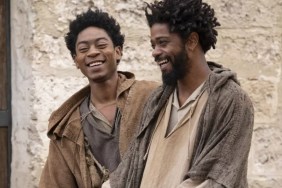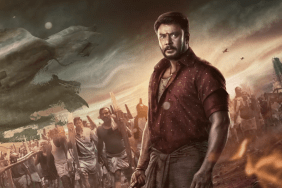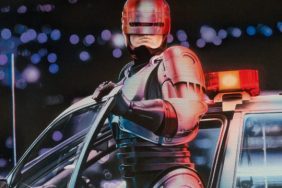
SHOCK writer Lee Gambin’s massive salute to the strange and beautiful musicals of the 1970’s.
A massive tome to celebrate a massive decade, filled to the brim with quality music, fashion, films, and art, Australian cult film maven and FANGORIA and SHOCK writer Lee Gambins WE CAN BE WHO WE ARE: MOVIE MUSICALS OF THE 1970’S is the one-stop source for the last great decade of man. Never again have so many films been pedestaled in such a short time period, and add the heavy backbeats and harmonies of people expressing themselves as best they can and you have the basis for this last great period of filmmaking.
At 744 pages plus index, WE CAN BE WHO WE ARE is obviously one of the more exhaustively researched and inclusive film books ever. Organized by decade, from 1970 through 1980, each chapter is this thick compilation covers every possible film that Gambin could find to bring to life the vivacious, and often dark, energy of these films.
Opening with an introduction to the changing face of the genre, disclosing the not-always-so-fluffy nature of the format, Gambin challenges presupposed ideas of the form, illuminating the times, emotions, and zeitgeist that can inform the musical film. While Broadway more constantly regurgitates the all-audience-clapping-for-their-moneys-worth style of presentation, the filmed musical is granted that personal interaction, and sending the audience home with thoughts rather than mere toe-tapping can often be the goal of a filmmaker.
Eschewing the fan-gushing that can illustrate such a text, Gambin, while of course elating where it grabs him most, does point out the faults and losses of some of the films, and how the how the Hollywood musical was already in a form of decline by the beginning of the 1970s. A reformatting of the filmed musical experience was in motion at the same time that society was changing, with LSD and hippies craving a theatrical experience as much as lovers of tap-dancing wanted to see a man in top hat and tails.

Due to the vast and comprehensive nature of Gambins research here a review can only provide a soft overview, though if there a musical film that was made between 1970 and 1980 chances are pretty good Gambin has lent his eye to the experience. The feature film PUFNSTUFF is lent as much weight to as the majesty of JESUS CHRIST SUPERSTAR, and animated films are held as high, with Disneys THE ARISTOCATS noted as well as rarities like Bill Feigenbaum and József Gémess HUGO THE HIPPO. Gambin sniffed out specialties like the Romanian-Soviet-French co-production ROCK ‘N’ ROLL WOLF, Jacques Demys take on THE PIED PIPER, and the film adaptation of the stage version of IT’S A BIRD…IT’S A PLANE…IT’S SUPERMAN! I, complete with Al Molinaro from “Happy Days” as a gangster! And who could forget the genre-friendly titles KISS MEETS THE PHANTOM OF THE PARK (shown at top) and PHANTOM OF THE PARADISE (above)?
Naming even just a few of the mega-hits like WILLY WONKA AND THE CHOCOLATE FACTORY, CABARET and FIDDLER ON THE ROOF, its easy to understand how Gambin could donate so much time to this thick and rich decade and the treasures created therein. And lest you feel Gambin may have succumbed to our current unfortunate social mores, the title of his chapter on the infamously performed nude OH! CALCUTTA! sums his approach up quite nicely: “He Licked Open My Cunt with His Big Fat Hairy Tongue”.
As I flip through the final pages of this essential study of the 1970s musical I just had to throw on Paul Williams wonderful music for BUGSY MALONE, another feat that could only be created during the most magical of musical decades, the 1970s. Relive, rediscover, and rebirth through this most necessary volume. WE CAN BE WHO WE ARE indeed.









